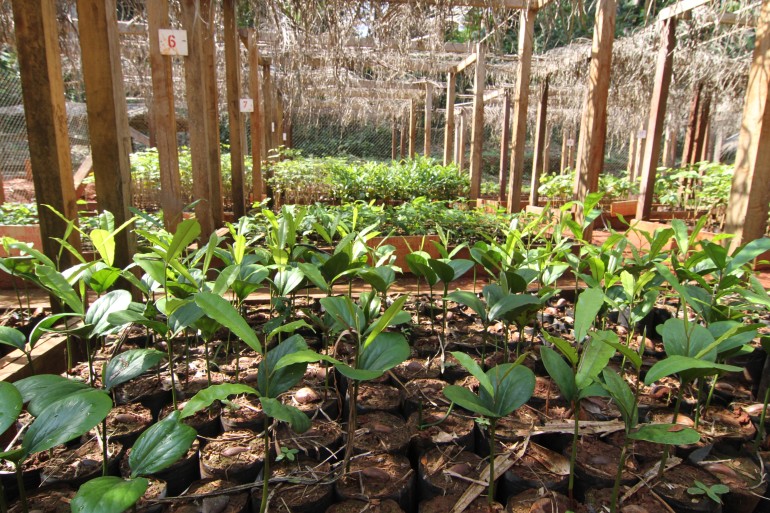

14.01.2022
Forestry plantations will be conducted over the next 4 years in 4 forestry companies.

Although the selectivity carried out by forestry companies committed to sustainable management has little impact on the forest cover (6-10% of open canopy, which heals very quickly [1]), it nevertheless causes a long-term scarcity of exploited [2] species, some of which are essential for the local populations of these forests, as they provide them with non-timber forest products (NTFPs). This is the case, for example, for sapelli and ayous (caterpillar collection), but also for moabi (seeds used for cooking oil production).
In order to maintain the quantity and quality of the forest potential, it is desirable to combine natural regeneration with silvicultural methods involving the planting of trees, giving priority to local species with a high heritage value. However, forestry operators, who are only granted concessions for a period of 30 years, face insecurity or a legal vacuum, which makes long-term investments unattractive.
This type of reforestation activity must therefore be encouraged with technical support and, above all, by the establishment of an incentive regulatory framework. All the actors in the territory must be associated as final beneficiaries: state services, private companies and local populations. In Cameroon, this joint ambition was clearly expressed in a synthetic document published by the Ministry of Forests and Wildlife of Cameroon, and expressing the orientations of forestry for the coming decades [3].
It is in this context that the UFA-Reforest project aims to contribute to the sustainable management of Cameroon's timber production forests by mobilizing private and public stakeholders around reforestation and future forest management strategies.
The project implementation consortium includes ATIBT, Nature+, Gembloux Agro-Bio Tech (University of Liège), as well as four companies of the Cameroonian forestry-wood sector: PALLISCO, GRUMCAM-ALPICAM, SEFAC, and SEEF. The École Normale Supérieure de l'Enseignement Technique (ENSET) of the University of Douala is also associated with the project.
A project manager is being recruited, and the project will also rely on a PhD student to conduct the necessary accompanying research activities.
The project aims at enriching 21,500 ha of exploited forests in the Forest Management Units with local species, complemented by 100 ha of open plantations. The final result is a minimum of 1,175 ha net enriched. In addition to the operational activities, a monitoring system will be implemented to capitalize on the results of the plantations and to ensure the follow-up of the performance of the enrichments carried out within the framework of the project. The project will associate the forestry administration in charge of silvicultural aspects, notably by supporting the modification of regulatory measures for the restoration of the forest cover and the renewal of the resource in FMUs on a national scale. The entire private forestry sector will also be involved, as well as the communities bordering the FMUs, including marginalized communities, youth, women and indigenous communities, and also technicians and scientists specialized in tropical forestry.
Thus, by aiming at the restoration of the forest cover and the maintenance of the populations of commercial species in the Forest Management Units (FMU), the project "Reforestation in the FMU of Cameroon", financed by the European Union, will contribute significantly to the Program for the Improvement of Governance in the Forest Environment (PAMFOR, of the National Indicative Program (NIP) of the 11th EDF (European Development Fund)) of Cameroon.
[1] Kleinschroth, F. & Healey, J. R. (2017). Impacts of logging roads on tropical forests. Biotropica, 49(5), 620-635.
[2] Zimmerman, B. L., & Kormos, C. F. (2012). Prospects for sustainable logging in tropical forests. BioScience, 62(5), 479-487.
[3] Ngomin, A. & Mvongo Nkene, M. N. (2015). Sylviculture de 2ème génération au Cameroun : bases conceptuelles, leviers et schéma d’opérationnalisation. MINFOF, GIZ.